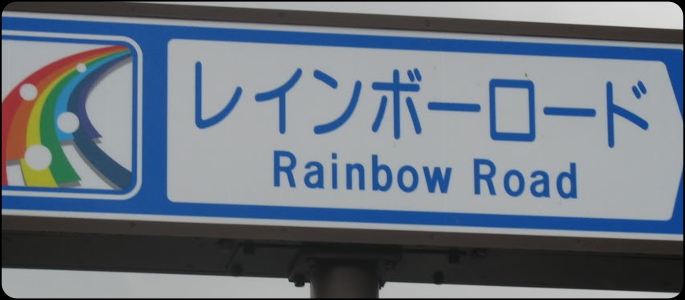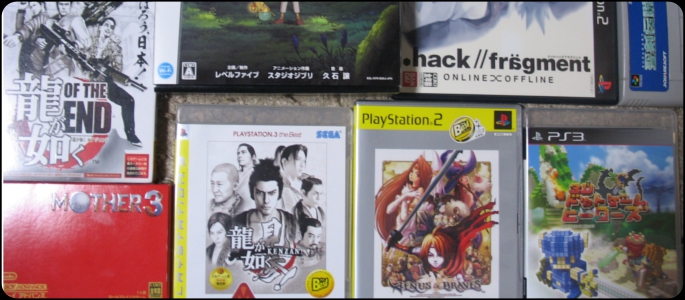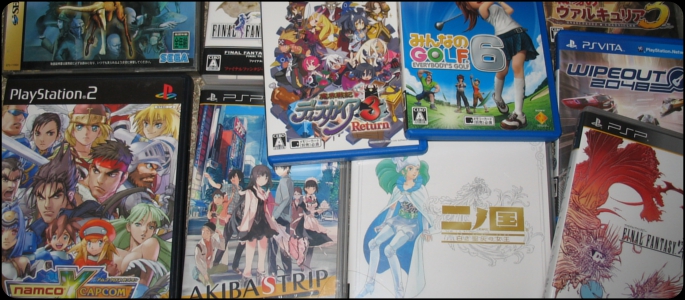These days, the PlayStation systems tend to be region free, as the PS3, PSP, and PS Vita can each play games from any region in the world. For a variety of case-specific reasons, many Japanese games are not localized in all regions, or take a long time to get such treatment, making an import quite tempting at times. There is, however, that whole language barrier issue. But what may surprise you is how much you can actually get out of Japanese games without knowing any Japanese at all, or very little. In this guide, I’ll help you learn how to make importing and enjoying Japanese games a feasible option for you, without having to attend language classes.
[Editor’s Note: Heath Hindman is a writer with high proficiency in Japanese, though this guide is written for anyone and everyone with an interest in playing Japanese games]
First and most obvious tip: use your Internet-Fu!
What games already play in your language?
Research it. There are a great many games that are released in Japan that come loaded with English, be it in the menus, voice work, or subtitle options. Some games are far more accommodating than others, of course, but all you need to do is hit up a forum or Google search, and you can get the info you need. You’re gonna want to make sure your system can play import games. As mentioned, PS Vita, PSP, and PS3 will work with any region’s software, but others are a tossup. Look into that.
Online FAQs?
Search around a bit. After a game has been out for at least a couple of weeks, there might be helpful communities of people who’ve imported the game you’ve got your eyes on, discussing things and sharing solutions. An example of this is might be with a fighting game. Perhaps you import this because you don’t care about the story of Butt Kicker 2: I Like to Kick Butts and I Can Not Lie, but you can’t understand what the heck 音 means in those options. There just might be someone online that can tell you, hey, that means sound. You’re messing with your sound options there. Stuff like that. Occasionally there are even story translations for you JRPG fans out there, though these might take a long time to surface.
Spoken, Written, or Both?
In doing your homework, find out if the Japanese required for a game is audio or reading. If by chance you can do one but not the other (common among foreign learners of this language), hey, you might be good to go.
Chances of localization? When and at what price?
Naturally, importing might make less sense if a local version is coming out in your area in the very near future, especially if said local version will cost less. Importing Tales of Graces F doesn’t make a whole lot of sense right now, since it’s coming to North America in March, but fans of that same series might be interested in Tales of Innocence-R for Vita, which hasn’t yet been announced for NA.
Okay, now, if you’re alright with some very light memorization that will increase your ability to play Japanese,

Japanese is a dying language, a fact that the locals refuse to realize. Every day, more and more of their own words are dying in favor of English adaptations. Within Japanese, there’s a specialized alphabet (well, syllabary) used for emphasis and/or foreign words. The great thing about learning to read it is that it’s ridiculously easy. You learn the pronunciation of a katakana symbol and it never changes, unlike English in which all of the vowels have multiple pronunciations. Even several consonants They’re easy to look up online and learn with a few flashcards. Pronounce the vowels like you would in Spanish* and you’ll be off to a good start. This is so easy, there’s almost no reason not to do it. Here, ア= “a”, イ=”i”, テ=”te”, and ム=”mu.” Put them all together and you have アイテム, or “aitemu “. Say that out loud a couple of times. Sound familiar? That’s “item.” Your ability to read that will help you in virtually every JRPG, now. The best part is, you learned that in like 30 seconds 🙂
Once you get a handle for how the Japanese say things, it’ll become easier and easier to figure out what that stuff means. The value of katakana in gaming (and Japanese in general) is getting bigger every day, as the Japanese slowly abandon their own words in favor of words taken from English (and occasionally French or Portugese). Kudamono has become “Furu-tsu,” a “ringo” is somewhat commonly called an “apple,” and the Osaka Women’s Health Clinic is indeed called the “Uiminsu Herusu Kuriniku.”
From there, if you’re wanting to level-up even more…
Get a dictionary.
This should be obvious. Google Translate is so-so at best, when it comes to Japanese; I prefer Yahoo!’s Japanese-to-English translator, though physical is best. At this point, internet can’t compete with a good old fashioned paper dictionary or any variety of electronic Word Tanks.
Start learning some basic grammar and Hiragana.
After you get all your psuedo-English words down with katakana, move on to Hiragana. It will be useful to know how to read “Hai” (はい, for “yes”) and “Iie” (いいえ, meaning “no”) as soon as possible — I even just gave them to you in this guide! But even if you can’t understand the word, knowing the little bit that says “something-something masuka (~ますか)?” and being able to figure out that someone is asking if you want to do something, will be useful.
Actually DO it.
Dive in head first before you even check the water. If you wait until your Japanese is perfect to start playing games in Japanese, you’ll never actually do it. My first Japanese game was Napple Tale for the Dreamcast back in 2002, when all I knew were some basic phrases and Hiragana. I didn’t understand much of the dialogue, of course, but I was careful in choosing a game that I knew wouldn’t have an intense plot, so that didn’t matter. My reward was that I got to enjoy a delightful action RPG that never came out anywhere but Japan.

As you go along, you’ll gradually pick up more and more, especially if you are studying the language outside of gaming; using your hobby to bolster the studies makes both go a hell of a lot more smoothly. But if the thought of “study” makes you cringe, screw it, you don’t have to. You’ll still pick up more words and even several kanji (those craaaazy symbols) the more games you play. It only gets easier, trust me. Worst case scenario, you spent a few bucks on a Japanese game that didn’t work out, and for your troubles, you have a badass collectible on your shelf. Best case, it’s a stepping stone to you shoving your fist in the face of The Man trying to hold you down. I started by hardly understanding any of Napple Tale, but today, I can thankfully pick up Japanese games without hesitation. It’s empowering to not be intimidated by language barriers.
The Beast That Is Kanji
Kanji is the Japanese writing system that has 2,000 common-use symbols. Mastering it won’t be easy no matter what strategy you take, and that’s just what’s up. I do, however, recommend Slime Forest as a great way to introduce yourself to the system; it’s especially great for learning the meanings of the symbols, which will usually be of the most use to you, as you play video games.
Email me.
If you’re wanting to give it a try, but have some looming concerns, leave a comment below or shoot me an email (heath |at| playstationlifestyle |dot| net). Do you want to know how complex or difficult the Japanese is, in a certain game? I can’t play close to half of them myself, but I might be able to give you an estimate on that. Legend of Heroes, for example, is brutal, and I’d recommend you steer clear of it if you’re a novice. I saved you some time and maybe some money right there! Speaking of time, I tend to have no less than 38 different people asking for my time at once, so I can’t guarantee I’ll be able to answer every single email, but I will do my best.
*If you are a snotty elitist about to give me crap about recommending Spanish pronunciation to someone who is just beginning to learn Japanese, kindly keep in mind that I realize it’s not always exact, but you know what it is? Close e-fucking-nough, especially brand new and especially when you’re just in the privacy of your own home. It’s fine. Chill out.






